
WHETHER IT'S THE LINE TYING YOU TO A DOCK, THE CHAIN LEADER CONNECTED to your anchor, or the rope that pulls you while water-skiing, rope and chain are a vital part of boating. No matter how you enjoy time on the water, doing so would be impossible, or at least a lot more challenging, without rope and chain.
But just how many different types of rope and chain are there? What's the difference between them? And why might you choose one over the other? You want to boat as safely and conveniently as possible, right?
Well, get your geek on. We can't describe everything possible about rope and chain in this article. But you'll learn more about rope and chain than you can shake a shackle at. Let's get started.
ROPE
What's the difference between rope and line? The US Navy says that the only rope aboard a ship is the bell rope. That seems preposterous. But what the squids are saying is that a line is a rope with designated purpose. An anchor line or dock line-more specifically, bow lines, stern lines and spring lines-start life as a length or coil of rope. Once its cut to length and put to use, it becomes a line. The bell rope gets a pass, probably due to tradition. In the same spirit, we'll define the rope used to tow a tube, wakeboarder or waterskier as a towrope.
Starting with rope, it sometimes serves alone as an anchor line. More often, it is used as just one component-along with shackles, swivels and chain to make up an anchor rode. So-called all-chain rode is also used. We will cover those in the chain section. Either alone or as part of a rode, the anchor line performs several functions.
هذه القصة مأخوذة من طبعة April 2023 من Boating.
ابدأ النسخة التجريبية المجانية من Magzter GOLD لمدة 7 أيام للوصول إلى آلاف القصص المتميزة المنسقة وأكثر من 9,000 مجلة وصحيفة.
بالفعل مشترك ? تسجيل الدخول
هذه القصة مأخوذة من طبعة April 2023 من Boating.
ابدأ النسخة التجريبية المجانية من Magzter GOLD لمدة 7 أيام للوصول إلى آلاف القصص المتميزة المنسقة وأكثر من 9,000 مجلة وصحيفة.
بالفعل مشترك? تسجيل الدخول
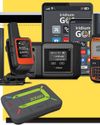
AFFORDABLE SATCOM
Communications devices using satellite technology are more abundant today than any time in the past. What's more, many are portable, ultra-compact, affordable relatively and designed for boating, dispelling any perceptions that you need a big, expensive dome antenna aloft to access satellite communications.

IN THE BEGINNING
REPOWERING FOUNTAIN HULL NO.1
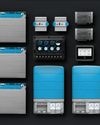
NAVICO GROUP FATHOM 2.0
Engine charging at 48 volts could be a game-changer.
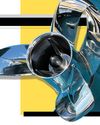
PROPS FOR INNOVATION
Sharrow MX3 propellers live up to most of the company's performance-improvement claims.

MERCURY RACING 500R
Supercharged power for a variety of boats.

FLIPPING THE SWITCH
Much reporting focuses on reasons why one might choose electric marine power. The issues of range, speed, noise levels, winterizing and ethanol challenges, lake restrictions, environmental concerns and more all must be resolved on an individual basis. Little gets said about how a boater choosing to repower with electric actually gets that accomplished. Is it DIY? And if not, how does it get done?

TOW-VEHICLE TECH
If it's been a while since you bought new tow vehicle, you might be surprised by the many built-in advancements in trailering technology. New tow tech ranges from integrated weight scales and adaptive suspensions to systems that automatically back up your truck to hitch up your trailer. Here are a few examples to look for. -Jim Hendricks

MONUMENTAL TIPS FOR BACKING A TRAILER
Three Boating greats offer advice for a perennial reader query.
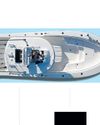
STICKING POINTS - Anchoring alternatives, and why you will always need a traditional anchor.
My brother-in-law likes to fish offshore reefs, and the process once entailed navigating to a mark, dropping a float, and idling upwind or up-current to drop the anchor in hopes the set would drop us back to the float.
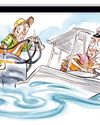
FOR WANT OF A CLAMP
When 100 miles from shore, home and help, this boater’s preparedness prevented potential catastrophe.